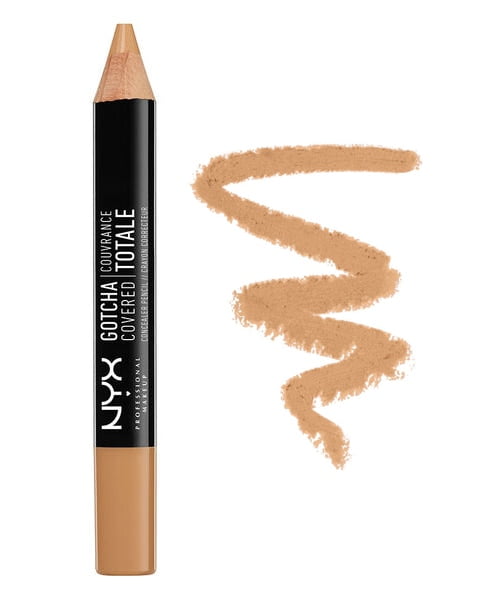

To highlight or contour with concealer, you’ll need one shade lighter than your skin tone and another that’s darker. There are, however, cases where your concealer shouldn’t match your skin exactly.
#Nyx concealer trial
To test out concealers in real life, it’s a matter of trial and error: Apply a few different options (in natural lighting) and choose whichever one matches your skin best. Or, use our “Click & Consult” feature for a live 1-on-1 beauty consultation with an expert (available 9AM to 6PM PST from Monday to Friday). If you’re shopping online, you can use our virtual try-on tool to get an idea of which NYX Professional Makeup concealer shade flatters your skin best.
#Nyx concealer how to
If your main goal is to cover minor imperfections, seek out a shade that matches your foundation (and if you need help with that, learn how to pick your perfect foundation here). How To Choose Your Concealer ShadeĬhoosing your ideal concealer shade depends on what you’re using your concealer for. You can mix and match the shades to customize a color that addresses your skin’s needs, or apply your concealer directly from the pan and blend for an even-looking base. The six-pan palette contains six color-correcting concealers to help address visible skin discolorations like redness, yellowness, and dark circles. For those that prefer cream makeup, we have our Color Correcting Palette. These concealers often come in a palette, small jar, or compact and tend to provide a more full-coverage finish than thinner liquid formulas. Cream ConcealerĬream concealers are thicker (and, well, creamier) than liquid concealers. Plus, the unique formula is suitable for all skin types, including dry skin and sensitive skin. It applies and blends easily, providing medium coverage with a natural-looking finish. The hydrating concealer with tremella mushroom, cica (also known as centella asiatica) extract, and green tea comes in 13 shades to complement a range of skin tones. If that sounds like something you’d like, check out Bare With Me Concealer Serum. Other than that, their benefits are the same: Serum concealers can be used to cover blemishes, brighten the under-eye area, and conceal imperfections that your foundation didn’t completely cover. They also aren’t quite the same texture-wise-they’re more fluid and, well, serum-like than typical concealers. First and foremost, serum concealers typically offer skincare benefits, like hydration. While serum concealers are a type of liquid concealer, they have a few facets that distinguish them from other concealers. It’s available in 20 true-to-skin shades as well as three color-correcting options for brightening dark circles, canceling out visible redness, and seamlessly camouflaging dark spots. The formula goes on like a dream with a natural finish that doesn’t look cakey or obvious. Plus, the concealer shades coordinate with our Can’t Stop Won’t Stop Full-Coverage Foundation, which makes perfecting your base a breeze.Īnother liquid concealer we love is the emollient-rich HD Photogenic Concealer Wand.
#Nyx concealer full
Available in 24 diverse shades for a range of skin tones (and undertones!), this highly-pigmented liquid concealer provides full coverage with a matte finish that lasts up to 24 hours. They can come in matte, natural, or dewy finishes and provide medium, full, or buildable coverage-it depends on the specific formula you choose and how you apply it.Īt NYX Professional Makeup, we have a few different liquid concealers to choose from, such as our classic Can’t Stop Won’t Stop Contour Concealer. Generally speaking, liquid concealers are easy to apply and blend well, which makes them a favorite amongst makeup artists and beauty newbies alike.


When you picture concealer in your mind, you likely picture liquid concealer (you know, in a tube, with an attached applicator wand). Ahead, learn about different concealer formulas and their uses. Both have benefits determining which is best for you boils down to how you plan to use it. There are a few different types of concealer you can choose from, but the most common formulas tend to be liquids and creams.


 0 kommentar(er)
0 kommentar(er)
